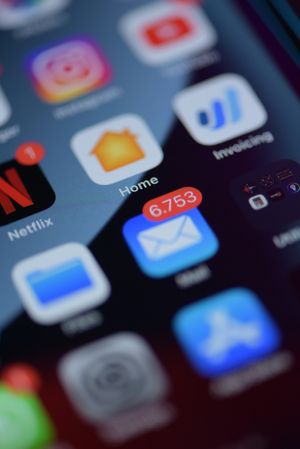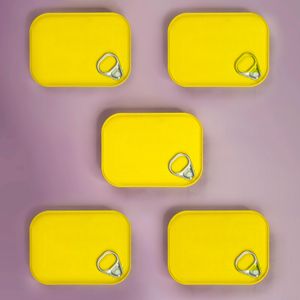Just like one swallow doesn’t make a spring, one cold email doesn’t make a sale. In fact, you’ll need at least three emails in your cold email sequence to convince the prospect even to hear you out.
So, in this guide, I’m showing you everything I’ve learned in the past ten years of cold outreach and sales. You’ll learn how to create a profitable cold email sequence, the fundamental principles behind tailoring it to your ICP and best practices.
I’ll even throw in a few templates!
Why Isn’t One Email Enough?
In some cases, one really good cold email might be enough to convert, but in 80% of deals, you will need to give your prospect more information to work with. And that’s information you can’t simply chuck into one email while keeping it brief and engaging enough to avoid the Spam folder.
Just a few things your prospects will need to know before converting include the following:
- Are you legitimate and have a track record?
- Is your offer really what they need at the moment?
- Are you better than your competitors?
- Do you fit their budget?
- How will they convince other decision-makers?
- What do your customers have to say about you?
- Can you address their objections?
And that’s just the tip of the iceberg! Sure, you could try to do all that in one email, but it’d just tank your response and conversion rates. So, instead of trying to one-and-done it, you’ll need a cold email sequence!
What Does a Cold Email Sequence Look Like?
A cold email sequence is a series of emails designed to introduce your offer to someone who has no prior relationship with you. If you’re familiar with drip campaigns in marketing, cold email sequences have the same goal of nurturing the prospect into becoming a customer by meeting them at every decision-making touchpoint.
An elementary cold email sequence example would look something like this:
- Email one: Introduction and common interest
- Wait 2-3 days
- Email two: Value offer and/or idea, additional resources or case studies
- Wait 2-3 days
- Email three: Social proof
- Wait 2-3 days
- Email four: Follow-up and final call to action
Think of them as a series of automated follow-ups.
And if the sequence feels similar to the buyer journey (awareness – consideration – decision), that’s for a reason. You’re trying to speed-run through it, giving the prospect every bit of information they need to make a decision in your favor.
The best part? You can fully automate this with cold outreach tools, creating triggers for opens and replies to adjust your sequence accordingly.
For example, your intro email might be so good that the prospect immediately books a call, so they wouldn’t need to get the rest of the sequence.
The Step-by-Step Guide to Creating a Profitable Cold Email Sequence
Step 1. Know Your Prospect so You Can Personalize
I love it when I read these sales guides and no one mentions that you do need to keep tabs on your prospects if you want to personalize your cold emails (and sequences) enough to get a conversion out of it.
First, you’ll need an Ideal Customer Profile. You don’t have to call them “Marketing Matt” or “Sales Sandra.” But you do need to know what the types of people you’ll be emailing have on their radars:
- What are their individual, team and organizational goals?
- What’s preventing them from achieving them?
- What is frustrating them about their day-to-day jobs?
Build a fully fleshed-out persona so you know which pain points to tease at in your opening email.
For example, suppose you’re in the email deliverability sector like Findymail. In that case, you know there’s nothing worse than building a solid cold outreach sequence only to realize that only half of your lead list got the email.
That’s a tangible pain point. And that’s what I want you to have plenty of in your research roster before you start automating cold email sequences!
Similarly, it’s helpful if they already had experiences with products like yours – perhaps a competitor’s product that didn’t work for them. This may make them more hesitant to trust you, but if you can properly differentiate your solution and demonstrate a track record, it can become a huge win.
One thing I like to do so I can personalize at scale is to build lead lists in Sales Navigator and set the right update notifications. That way, I immediately know what’s on top of my prospect’s mind through their posts and company updates.
Once you have a clear picture of your target audience, you can segment your lead list. For example, you might have different email sequences for different industries, job titles or pain points. This will show your recipients that you understand their specific needs and can offer a solution tailored to their situation.
Step 2. Understand Your Prospect’s Buyer Journey
The best way to intercept your prospects at their current stage and nurture them through the funnel is to map your cold email sequence to the buyer journey. Personally, I like to keep things simple:
The Awareness Stage
In the Awareness stage, the prospect is just realizing they have a problem or need. Your goal is to grab their attention and provide educational content that convinces them your offer is precisely what they need.
This is a great approach when you have leads who are 2/3rds qualified but need to be made aware that your offer could solve their problem.
In this part of your cold email sequence, focus on introducing yourself and your shared interest or industry. Then, offer to share valuable content, such as a blog post, whitepaper or industry report, to educate them on the problem or need.
Follow through by sharing content that addresses their pain points or challenges, emphasize the potential consequences of not solving the problem and encourage them to contact you or explore your content further.
The Consideration Stage
The consideration stage is an excellent place to intercept your prospects because they’re actively looking for ways to solve a problem they’re aware of. If your offer matches the stage, you’ll be golden!
However, you’ll need to position your product or service as a viable solution.
Your emails at this stage could include the following:
- Specific ideas or solutions that address the lead’s challenges.
- Highlights about how your product or service can solve the problem.
- Success stories, case studies or testimonials that demonstrate how you helped others.
The goal is to get them to respond to your email and hop on a call to discuss some of these ideas in more detail. Again, if you don’t have a huge lead list, you might personalize the ideas you send.
If your lead list is too extensive to give everyone equal attention, segment your audience and create groups of solutions that hit the nail on the head for different types of personas.
The Decision Stage
In the decision stage, your prospect evaluates potential providers and decides on the best solution. You get a headstart if you were there with them from the awareness stage of your cold email sequence.
All that’s left to do is encourage a buying decision!
At this point, your emails will need to cover the following:
- Acknowledging their considerations and objections.
- Offering a free trial, demo or consultation.
- Emphasizing the benefits of your offer versus your competitors’ offers.
Ultimately, these are the final nudges where you need to go hard on why you’re the best business for the task. You can A/B test limited-time offers and other urgency plays to heighten the perceived importance of the problem in your prospects’ eyes.
Now, when you align your cold email sequence with the buyer’s journey, you’ll be able to deliver the right message at the right time. However, don’t forget to make your sequences dynamic, so they adapt based on the prospects’ responses.
You can also add the leads at different stages of their journeys to those stages in your sequence.
For example, Lead A is in the awareness stage, so you can add them to the start of the sequence. Conversely, Lead B could already be in the decision stage, so their journey will start with your last two or three emails.
Step 3. Cold Email Sequence Automation
Ideally, your cold email sequence automation tool will free up your time so you can focus on jumping in only when a prospect responds or wants to book a time with you. That’s the goal!
However, you still need to keep an eye on things and give prospects the option to unsubscribe if they no longer want to hear from you.
When picking a tool, look for personalization, segmentation and tracking features. Ideally, you’ll be able to simply insert the leads, segment them so they get the correct sequence based on the relevant triggers and track your results so you can optimize.
For example, you could set up the trigger that fires off a cold email sequence when a lead gets a promotion or their company receives funding. Depending on your tool stack, you can use Sales Navigator or a data enrichment tool to stay on top of things.
Step 4. Create a Powerful First Email in Your Cold Email Sequence
As I said, your cold email sequence structure needs to be watertight. You’re not just staying in touch to stay in touch – you’re emailing to introduce your offer, help solve their problems and address their objections.
In those terms, the first email is the first impression. I’ve written a few guides on cold email personalization, but follow the tricks I’m about to show you to start the conversation on the right note:
- You researched the lead, but are they the only decision-maker? In many B2B cases, you’ll actually be dealing with a buying committee, the members of which might all be at different stages. Your cold email sequence can target the primary lead/buyer but don’t forget to give them arguments and materials they can share with other stakeholders as part of your third or fourth email.
- Subject lines don’t require black magic (although it sometimes may look like it). Avoid “Quick question”s and try to personalize the subject line. Try being bold (“Get rid of your deliverability problems.”), test emojis, try your hand at before-and-after storytelling (“Your lead gen process after Findymail? 10% increase in responses from SQLs.”) and experiment.
- Try an icebreaker. Depending on your lead profile, you might try something you found through personalization, a common interest, a metaphor or even a joke. Avoid starting your emails with “I hope you’re well.”
- Use data enrichment services or jot down common interests while researching the prospects. Ideally, your lead spreadsheet will include the points of personalization you can reference or pull into your cold email sequence automation tool so everything runs on auto-pilot and delivers results.
- Stay focused. Don’t go into too much detail on your offer – that’s what your upcoming emails are for. Instead, your first email should be punchy and promise more value. Find the most pressing pain point for your leads and play that card.
- Tell your prospects what you want them to do. If you want them to reply to your email saying “Yes” because they want to learn more, tell them. Do you want them to book a call? Suggest times or provide a Calendly link. Always guide them with your CTA.
Step 5. Create Value in Every Cold Email Sequence Email
I see many sales professionals putting in effort for the first cold email in the sequence. The problem is that their attention drops when it comes to the follow-up emails or the following emails in the sequence. They flounder; they’re unsure what they want the lead to do or if the lead is qualified.
That’s why it’s crucial to understand where your lead is in the buyer journey before you even fire off the sequence. And if you’re unsure, look at the metrics:
- Have they opened your email? Follow up with more value and an educational resource appropriate to their stage. (For example, if someone’s a stranger to deliverability, we wouldn’t start by telling them about email warmup. Instead, we’d send them a link to our quick video on how email deliverability affects their conversion rates.)
- Have they ignored your email? Try a different subject line to get an open.
- Have they replied to your email? Start a conversation and understand what appealed to them.
The data will tell you everything. Soon enough, you’ll find you started with one sequence and transformed it into a completely different one. If you can also analyze data and spot the patterns, you’ll be golden.
At the very least, follow the structure I’ve outlined for you in this guide. You can’t go wrong with the first email establishing the common interest, following up with value and track record and wrapping things up by showcasing how you’re proven to be better than the competition.
Have dedicated materials for each stage. In the first emails, those can be blog posts or infographics. Later on, you might need a webinar or a case study. No matter what, ensure you can back up the claims you make in your emails.
Cold Email Sequence Template
This clean-cut buyer journey sequence is universally applicable. It follows the buyer's journey in its entirety.
For our examples, we’ll use Findymail’s solution for verified email addresses.
Email 1. Introduction, Common Interests and Pain Points
Subject line: You can’t convert prospects who don’t get your emails.
Copy:
“Hey [NAME],
[Personalized question] Are you aware of the impact your email deliverability has on your conversions?
[Reason for getting in touch] You recently posted about making cold outreach conversions your top priority for this quarter. You won’t see results unless you email verified email addresses and leads who want to hear from you.
[Social proof] Findymail specializes in helping sales teams like yours get more verified email addresses, keep their deliverability high and generate more conversions.
In our latest project with [Client Name], we saw their bounce rates drop below 2% and their SQLs increase by 15% in just one week.
Since [The Lead’s Company] is in the same industry and focuses on the same goals, I’d love to discuss how we can help you quickly implement the solution.
[CTA] If you’re interested, just reply “Yes” to this email and I’ll send you more information!”
Email 2. Value Offer
Subject line: One quick-win idea for your email deliverability
Copy:
“Hey [NAME],
In my last email, I mentioned how we helped [Company] increase their SQLs by 15% in just one week by boosting their email deliverability.
[Idea] Your company uses Sales Navigator and this is a simple way to see the same boosts:
- Build a lead list on Sales Nav
- Export them with verified email addresses with Findymail
- Add the leads to your cold outreach list or tool
It’s worked for 100+ of our clients in [The Lead’s Industry] and your bounce rate will stay below 2%, so you can be sure your leads are actually getting your emails.
Sounds good? Let’s book a time to talk more: [LINK].”
Email 3. Addressing Objections
Subject line: Why Findymail increases email deliverability where [Competitors] fail
Copy:
“Hey [NAME],
[Objection] If you’re currently wondering: “But won’t we just get “guessed” email addresses?” I know the feeling.
That’s why I built Findymail in the first place.
We don’t guess email addresses. You won’t have to worry about bounces.
Our proprietary EmailDiscovery ™ algorithm finds accurate company email addresses or we don’t charge you a single credit for the search.
You can try it for yourself with 10 free credits: [LINK].”
Email 4. Social Proof
Subject line: How [Company X] and [Company Y] increased their deliverability
Copy:
“Hey [NAME],
I already mentioned [The Company from the First Email], but other companies in [Industry] have successfully used Findymail.
You might be interested in the following case studies. You won’t just see the results but the strategies they used!
- Case study 1
- Case study 2
- Case study 3
Interested in getting the same results at your company? Let’s book a 15-minute chat!”
Email 5. The Final Follow-up
Subject line: Goodbye, [Name]
Copy:
“Hey [NAME],
I’m sorry we couldn’t adjust our schedules and show you how Findymail can improve your cold outreach conversions.
If email deliverability gets on your radar in the future, I’d be happy to restart the conversation.
Best of luck to you and the team!”
Build a Cold Email Sequence that Converts
The key to building a winning cold email sequence is giving it structure, providing enough value and matching it to where your prospect currently is, so you can help them find their way to where they actually want to be.
While I’ve shown you the principles, structures and templates, I want you to make them your own:
- Do your leads need more convincing that the problem is real? Double down on the pain agitation with additional emails.
- How strong are your leads’ objections? Feel free to distribute them across two or even three emails.
- What are your CTA options? If you sell software, you might need them to hop on a demo – or you might prepare a personalized demo in advance. If you can offer free credits, like we do at Findymail, play that angle. The smaller the initial commitment, the easier it will be for your lead to test your offer and become a paying customer.
At the end of the day, understand the people you’re talking to. Then, take the formulas I’ve given you in this guide and adapt them to how your customers want to be sold to.
You’ve got this!






